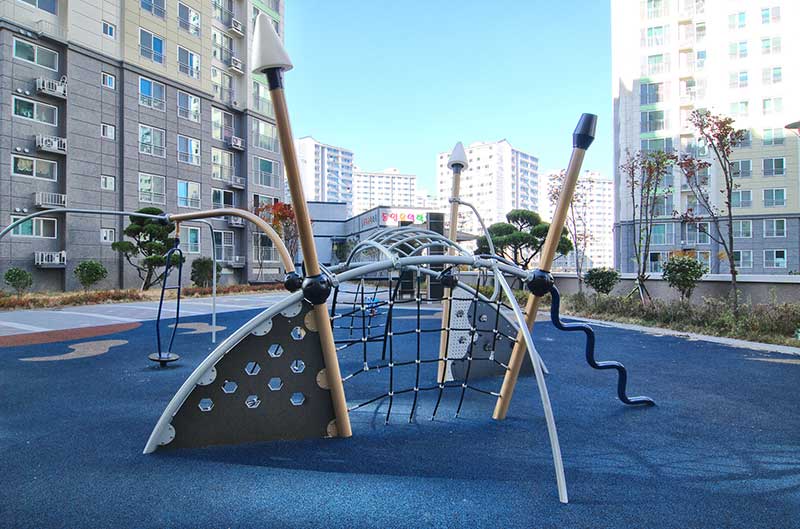
Recreational Playground Materials
Author: Austin Stanfel
Historically, Wood and Steel
Playgrounds of the past were created with readily available materials. These mainly included wood and steel. Even though these materials can be durable, they are not without their fair share of disadvantages. Wood can easily splinter, crack and begin to look very weathered. It requires a great deal of maintenance and painting for it to remain stylish. Even though wood can be easily repaired, it requires many repairs, and, on average, does not last as long as other materials. Steel is very durable; however, steel slides can become very hot and pose a danger to playing children. It can also cause injury if you fall on hard, steel surfaces or protrusions. Additionally, the steel components are not very customizable or repairable.
Modern Materials
Plastics and recycled plastics are customizable, durable, and safer for play than the materials of older play sets. Wood and steel components are still included to provide structural strength to the playground. However, several elements of modern play sets usually consist of polyethylene and recycled plastic materials, which are resistant to splintering, rusting, and rotting. Recycled plastics convert our daily plastic containers into durable materials that look very similar to wood. This material can be customized to different shapes and sizes to add a rustic look to playgrounds that will not fade or diminish with time. Polyethylene is used in a variety of ways throughout the playground. In a textured and high-density format, it can be formed into tables, signs, and activity panels. The material can be painted with a UV-resistant color to decrease fading, and extend the life of the playground’s colorful attraction. The low-density polyethylene materials can be formed into several shapes to produce the tubes and turning slides, which children love to explore.
The Advantages of Plastic and Recycled Plastic
Polyethylene has many advantages, especially when compared to the wood and steel materials of older playgrounds. Polyethylene does not get hot under long-term sun exposure. There is also no risk of splinters with the polyethylene material. Additionally, the plastic can be molded and customized into several shapes. This increases the creativity of each play set and encourages imaginative play for children. The shapes can also increase safety for the playing children – tube slides and wave slides for younger playground visitors. The plastic material’s texture is also an advantage, since the polyethylene is smooth to the touch. Even though the paint may fade over several years, the plastic material is more durable than wood. Recycled plastic has the additional benefit of being made from recycled materials, which helps to prevent waste accumulation.
Safety and Structure
Steel remains one of the most structurally sound materials available for use in the creation of playgrounds. However, this material can be coated in plastic or PVC to enhance safety. This plastic coating softens the area in the event of a fall. The plastic also increases the foot traction of the surface, which prevents slips and falls. The plastic coating, which is usually then painted with a UV-resistant polymer, may thoroughly disguise the steel structure of the play set. In this way, the advantages of the historical sets are meshed with modern materials to produce safe, customizable, and durable playgrounds.

